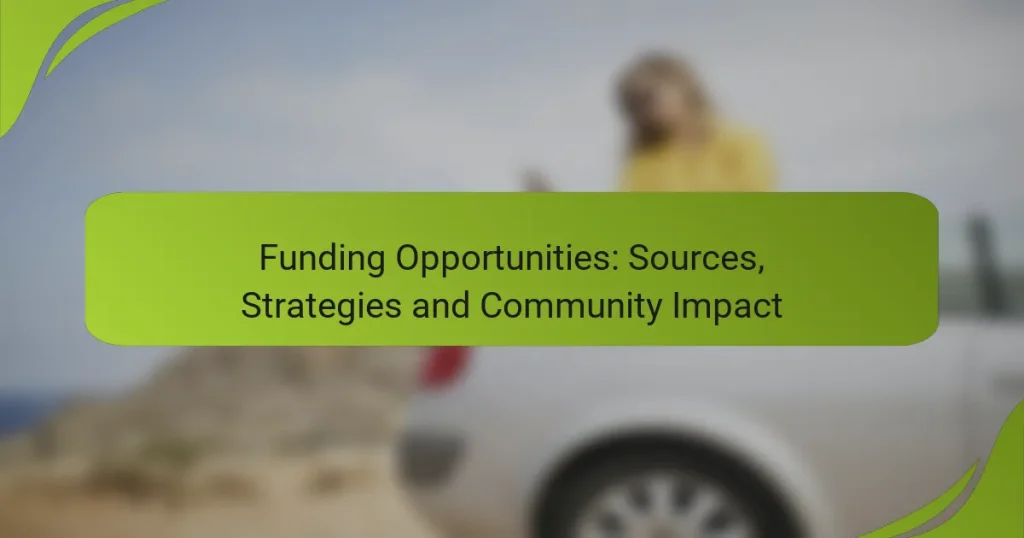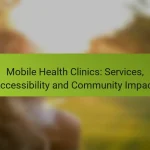Exploring funding opportunities is crucial for the success of community projects, with various sources such as government grants, private foundations, and crowdfunding platforms available. By crafting strong proposals and leveraging strategic partnerships, organizations can enhance their visibility and attract financial support tailored to their specific needs. Implementing targeted approaches and compelling storytelling can further increase the likelihood of securing essential funding, ultimately driving positive community impact.
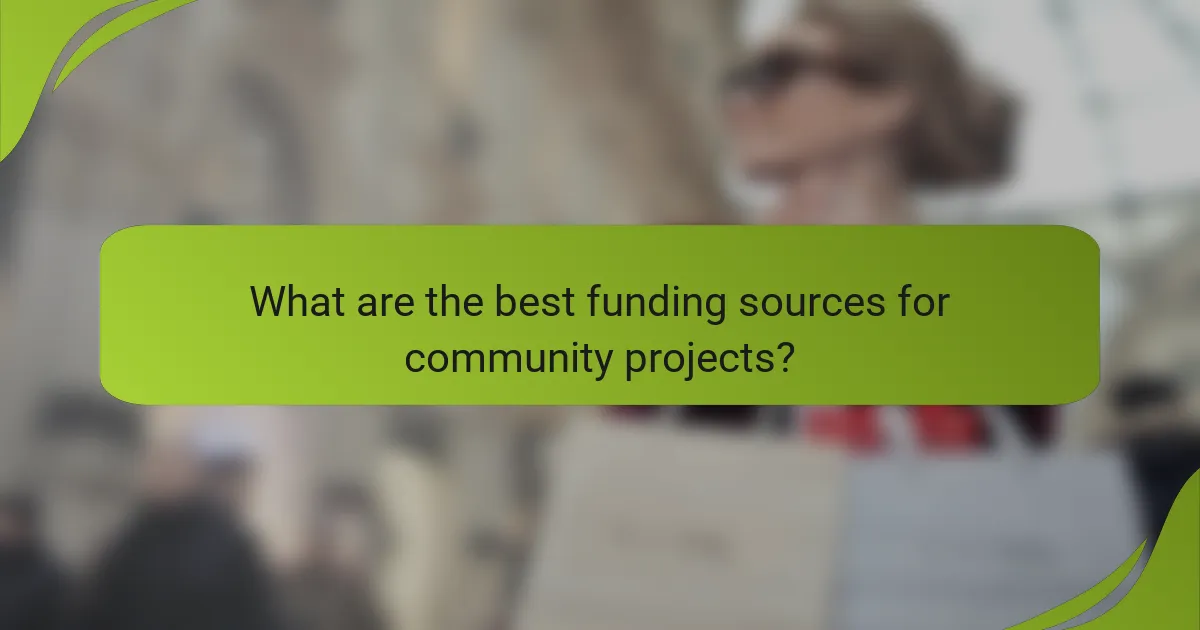
What are the best funding sources for community projects?
The best funding sources for community projects include government grants, private foundations, crowdfunding platforms, corporate sponsorships, and community fundraising events. Each source has unique characteristics, requirements, and potential impacts on the community, making it essential to evaluate them based on your project’s specific needs.
Government grants
Government grants are funds provided by federal, state, or local agencies to support specific community initiatives. These grants often have strict eligibility criteria and application processes, requiring detailed proposals that outline the project’s goals, budget, and expected outcomes.
To access government grants, research available programs and deadlines on official government websites. Be prepared to demonstrate how your project aligns with the agency’s objectives, and ensure compliance with any reporting requirements after receiving funding.
Private foundations
Private foundations are nonprofit organizations that provide financial support to community projects through grants. They typically focus on specific areas such as education, health, or the arts, and their funding can be more flexible than government grants.
To secure funding from private foundations, identify those that align with your project’s mission and values. Tailor your proposals to highlight how your project meets their funding priorities, and consider building relationships with foundation representatives to increase your chances of success.
Crowdfunding platforms
Crowdfunding platforms allow individuals and organizations to raise small amounts of money from a large number of people, usually via the internet. This method is particularly effective for community projects that can engage local supporters and create a sense of ownership.
When using crowdfunding, choose a platform that suits your project’s goals and audience. Create a compelling campaign with clear goals, engaging visuals, and regular updates to keep backers informed. Set a realistic funding target and consider offering rewards to incentivize contributions.
Corporate sponsorships
Corporate sponsorships involve partnerships with businesses that provide financial support in exchange for marketing opportunities or community goodwill. This can be a mutually beneficial arrangement, as companies often seek to enhance their brand image through community involvement.
To attract corporate sponsors, identify businesses that align with your project’s mission and values. Prepare a sponsorship proposal that outlines the benefits for the company, such as visibility at events or recognition in promotional materials. Be clear about the funding amount needed and how it will be used.
Community fundraising events
Community fundraising events are activities organized to raise money for a specific project or cause. These can include bake sales, charity runs, or auctions, and they often foster community engagement and support.
When planning a fundraising event, consider the interests and demographics of your community to ensure participation. Set clear goals for how much money you aim to raise and create a budget to manage expenses. Promote the event through local channels to maximize attendance and contributions.
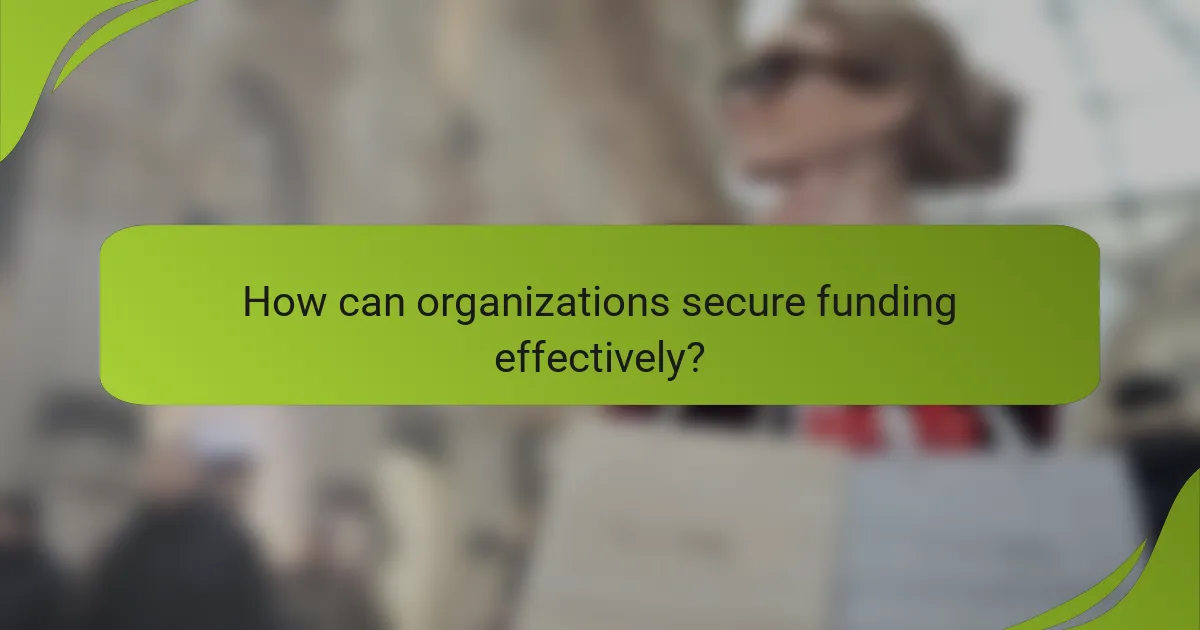
How can organizations secure funding effectively?
Organizations can secure funding effectively by crafting strong proposals, forming strategic partnerships, and leveraging social media for outreach. These methods enhance visibility and credibility, making it easier to attract financial support from various sources.
Developing a compelling proposal
A compelling proposal is essential for securing funding. It should clearly outline the organization’s mission, objectives, and the specific project for which funding is sought. Include a detailed budget that justifies the requested amount and demonstrates how funds will be utilized.
To strengthen the proposal, incorporate data and testimonials that showcase the impact of past projects. Tailor the proposal to align with the funder’s priorities, emphasizing shared goals and the potential benefits of the project.
Building partnerships with local businesses
Forming partnerships with local businesses can provide both financial support and resources. Collaborate on community initiatives that align with the interests of local companies, which can lead to sponsorships or in-kind donations.
Consider creating a formal partnership agreement that outlines mutual benefits, such as marketing opportunities for the business and visibility for the organization. This can enhance community engagement and foster long-term relationships.
Utilizing social media for outreach
Social media is a powerful tool for outreach and fundraising. Use platforms like Facebook, Instagram, and Twitter to share your organization’s story, engage with the community, and promote fundraising campaigns. Regular updates can keep followers informed and encourage donations.
Consider running targeted ad campaigns to reach specific demographics or geographic areas. Engaging content, such as videos or live events, can also boost visibility and attract potential donors. Always include clear calls to action to guide supporters on how to contribute.
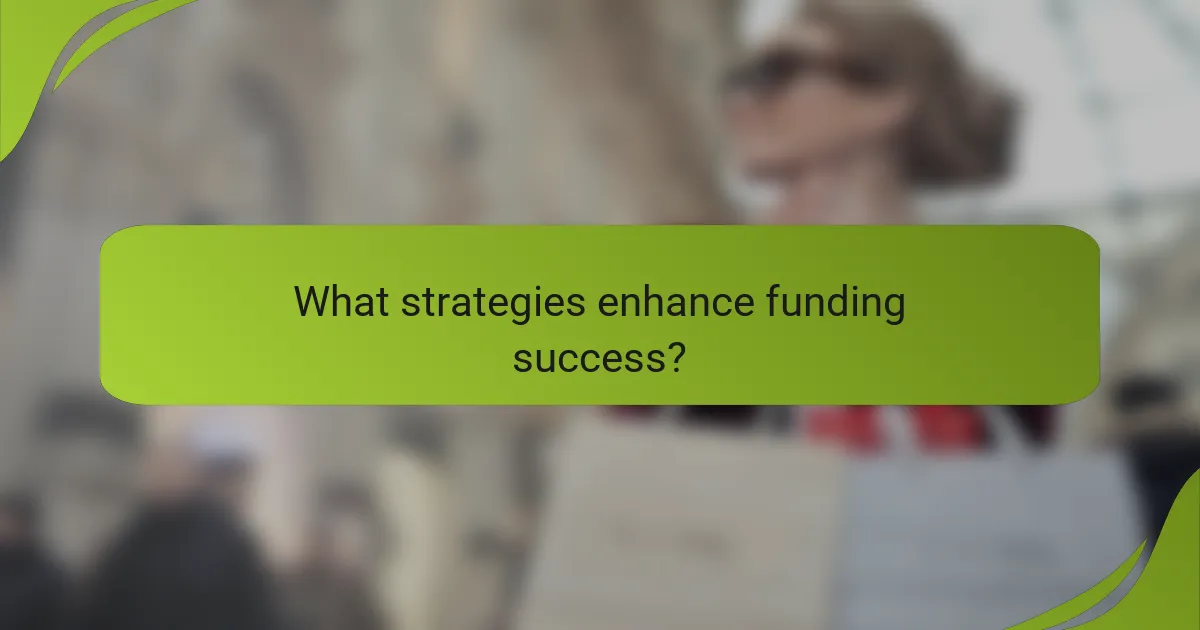
What strategies enhance funding success?
Enhancing funding success involves targeted approaches that align with donor interests, compelling storytelling, and community involvement. Implementing these strategies can significantly increase the likelihood of securing necessary financial support.
Targeting specific donor interests
To successfully target specific donor interests, research potential funders to understand their priorities and values. Tailor your proposals to reflect how your project aligns with their philanthropic goals, whether they focus on education, health, or environmental issues.
Consider creating donor personas that outline the motivations and preferences of different funding sources. This can help in crafting personalized outreach efforts that resonate with each donor’s unique interests.
Creating a strong impact narrative
A strong impact narrative clearly articulates the problem your organization addresses and the positive change it aims to create. Use data and personal stories to illustrate the significance of your work and its potential impact on the community.
Incorporate visuals such as infographics or videos to enhance your narrative. These elements can make your story more engaging and memorable, increasing the chances of attracting donor support.
Engaging the community in fundraising
Engaging the community in fundraising efforts can amplify your reach and strengthen relationships. Involve local stakeholders, volunteers, and beneficiaries in your campaigns to foster a sense of ownership and commitment to the cause.
Organize community events, such as fundraising dinners or charity runs, to raise awareness and funds. These activities not only generate financial support but also build a network of advocates who can help promote your mission.
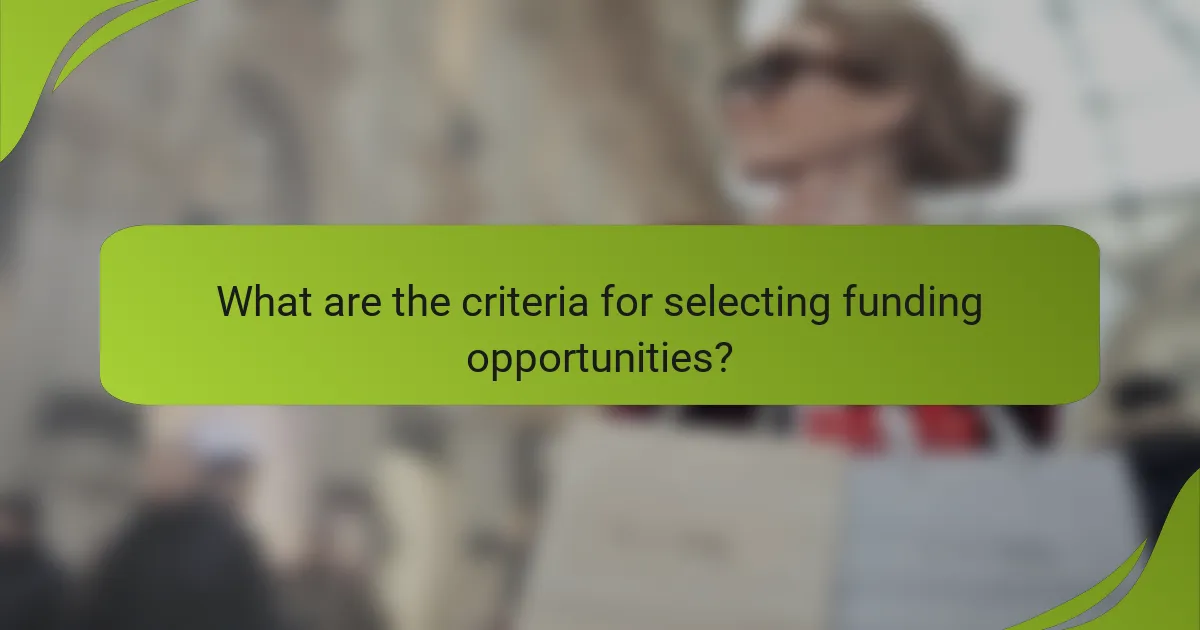
What are the criteria for selecting funding opportunities?
Selecting funding opportunities involves evaluating several key criteria to ensure alignment with your project’s needs and goals. These criteria include the project’s alignment with funding objectives, the amount and duration of funding available, and the specific eligibility requirements set by the funding source.
Alignment with project goals
When assessing funding opportunities, it’s crucial to determine how well they align with your project’s goals. Funders often have specific missions or areas of interest, so matching your objectives with theirs increases the likelihood of securing support.
For example, if your project focuses on environmental sustainability, seek out grants specifically aimed at ecological initiatives. This alignment not only enhances your proposal but also demonstrates a shared commitment to the funder’s priorities.
Funding amount and duration
The funding amount and duration are critical factors to consider. Different opportunities offer varying levels of financial support, which can range from a few thousand to several million dollars, depending on the project’s scope and the funder’s capacity.
Additionally, consider the funding duration. Some grants provide one-time funding, while others may offer multi-year support. Understanding these aspects helps in planning your project’s budget and timeline effectively.
Eligibility requirements
Eligibility requirements can vary significantly among funding sources. Common criteria include the type of organization (nonprofit, for-profit, government), geographic location, and the specific target population served.
Before applying, carefully review these requirements to ensure your organization qualifies. Failing to meet eligibility criteria is a common pitfall that can waste time and resources. Create a checklist of requirements to streamline your application process.

How does funding impact community development?
Funding plays a crucial role in community development by providing the necessary resources to enhance infrastructure, services, and overall quality of life. Effective allocation of funds can lead to significant improvements in local services, foster community engagement, and stimulate economic growth.
Improved local services
Access to funding allows communities to upgrade essential services such as education, healthcare, and public safety. For example, grants can be used to renovate schools, improve healthcare facilities, or enhance emergency services, directly benefiting residents.
Communities should prioritize funding applications that address specific local needs, ensuring that resources are allocated efficiently. Engaging with local stakeholders can help identify the most pressing service gaps that funding can address.
Increased community engagement
Funding can facilitate community engagement by supporting programs that encourage participation in local decision-making and activities. Initiatives such as community workshops, public forums, and volunteer programs can be funded to foster a sense of belonging and collaboration among residents.
To maximize engagement, communities should consider matching funds with volunteer efforts or local contributions. This approach not only stretches financial resources but also strengthens community ties and ownership of projects.
Economic growth and job creation
Investment in community development through funding can lead to economic growth and job creation. By financing local businesses, infrastructure projects, or workforce training programs, communities can stimulate their economies and reduce unemployment rates.
Communities should explore partnerships with local businesses and organizations to leverage funding for job creation initiatives. Additionally, applying for federal or state grants aimed at economic development can provide substantial financial support for these efforts.
